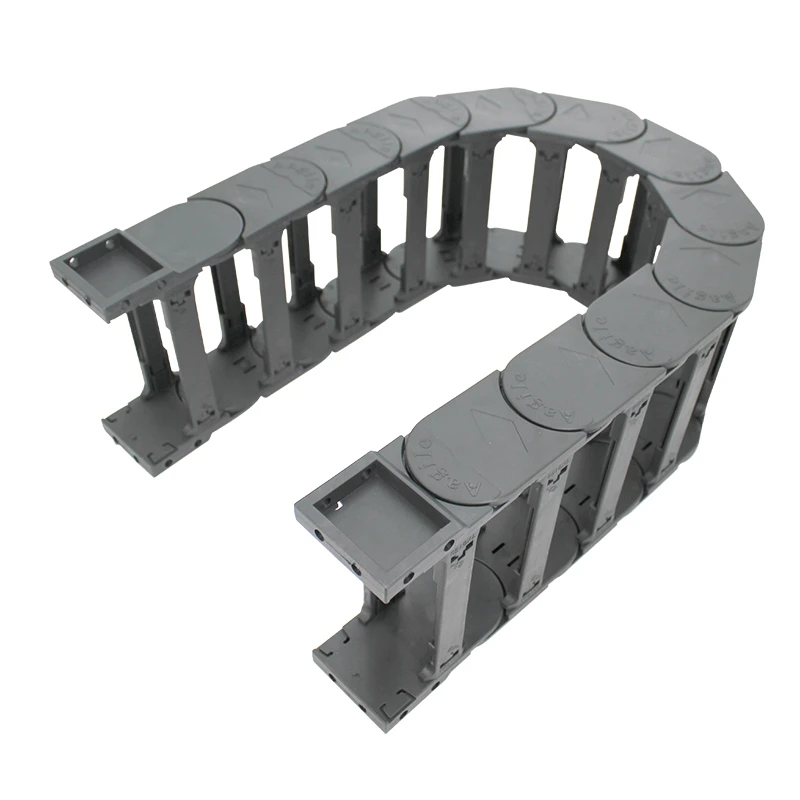Flexible Cable Carrier Solutions for Efficient Cable Management and Protection
Understanding Drag Chains A Critical Component in Modern Machinery
In the ever-evolving world of machinery and industrial applications, efficient cable management is paramount. Among the various solutions available, drag chains have emerged as a vital component that enhances the reliability and performance of equipment across multiple sectors, including manufacturing, automation, and robotics.
What is a Drag Chain?
A drag chain, also known as a cable carrier or energy chain, is a type of mechanical device designed to guide and protect cables and hoses in a moving assembly. It effectively organizes the movement of various cables, ensuring they do not become tangled or damaged as machinery operates. Drag chains are typically made from durable materials such as plastic or metal, allowing them to withstand harsh working conditions and repetitive motion.
The Importance of Drag Chains
The role of drag chains becomes particularly critical in environments where equipment experiences constant movement and flexing. Without proper cable management, cables can wear out quickly due to friction, exposure to harsh elements, or unauthorized tangling, leading to unexpected downtime and costly maintenance. Drag chains mitigate these risks by providing a structured pathway for cables and hoses that accommodates their movement while minimizing the wear and tear associated with operational activities.
Key Benefits of Drag Chains
1. Protection of Cables and Hoses One of the primary advantages of drag chains is their ability to shield cables and hoses from abrasion, crushing, and exposure to contaminants. By enclosing these components within the drag chain, organizations can prolong the life of their machinery and reduce maintenance intervals.
drag chain

2. Space Efficiency In many manufacturing settings, space can be a premium. Drag chains help organize cables and hoses in a compact manner, allowing for more efficient use of space and reducing hazards associated with trailing wires.
3. Flexibility and Adaptability Drag chains are available in various sizes, shapes, and designs, making them suitable for different applications. Whether it’s a stationary application with vertical movements or a dynamic environment needing multidirectional mobility, drag chains can be customized to meet specific needs.
4. Prevention of Downtime By ensuring that cables and hoses remain untangled and protected, drag chains contribute significantly to minimizing equipment downtime. This reliability enhances productivity and enables smoother operational workflows.
5. Ease of Maintenance Utilizing drag chains simplifies the maintenance process. Each chain can be easily disassembled to access the cables and hoses within, allowing for quick repairs or replacements without the need for extensive machinery disassembly.
Applications of Drag Chains
Drag chains are used across a broad spectrum of industries. In automation and robotics, they offer a reliable solution for guiding electrical wires and pneumatic hoses. In CNC machining, drag chains protect critical power and control cables while facilitating intricate movements of cutting tools. Additionally, their application extends to overhead cranes, conveyor systems, and packaging machinery, among others.
Conclusion
In conclusion, drag chains represent an essential innovation in the realm of mechanical and industrial design. By safeguarding cables and hoses, optimizing space, and enhancing operational safety, drag chains have become indispensable in modern machinery. As industries continue to prioritize efficiency and reliability, the role of drag chains will undoubtedly expand, adapting to new technologies and challenges that lie ahead. Investing in high-quality drag chains can yield long-term benefits, ensuring continued success in an increasingly competitive landscape.








